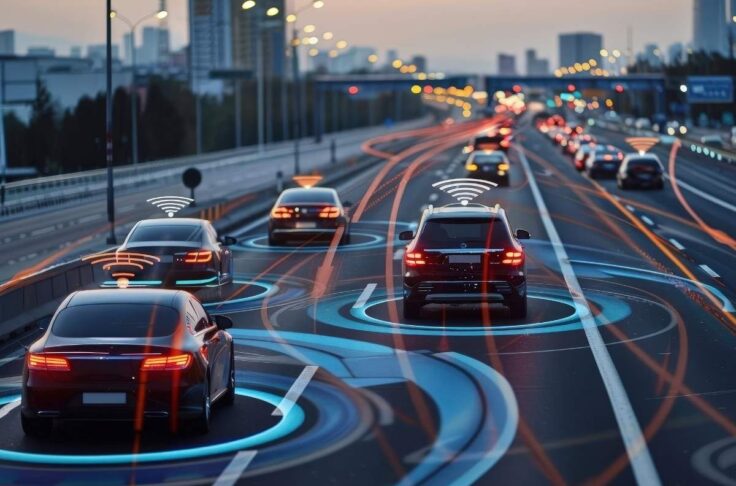European Carsharing Insights – Lessons from Augustin Friedel
Summary
The carsharing market is constantly evolving. That is why we spoke with Augustin Friedel, one of the most knowledgeable and visible voices in the shared mobility industry. He shares his analyses via LinkedIn, conferences, white papers, and interviews among other channels. He works as a Senior Manager at MHP – A Porsche Company. We talked with him on his personal carsharing experience, the status of the industry, and how the carsharing of the future could look like.

Do you remember when you used carsharing first? What has changed since your first carsharing experiences?
My first carsharing ride was already more than 10 years ago – when I remember correctly, it was a ride with a Drive Now vehicle in Munich. So many aspects changed since my first ride. The operator landscape completely changed, as well as the vehicles that we see in sharing, and the user experience. Here are two examples that changed: Back in the days, I had to use a physical key card to open and close the vehicles – now it’s done via your smartphone app. There were no electric vehicles available, today we find an increasing rate of electric carsharing vehicles within the fleet of multiple operators.
Compared to 30 years ago, carsharing is on an all-time high. From your perspective, where is the industry standing?
The usage of carsharing and other shared mobility services is increasing, that is a positive trend. If we compare the numbers with the overall mobility behavior, the share of trips done by carsharing or other shared mobility options is minimal. Based on my own calculations, I would expect that less than 0.1 percent of all urban trips in Europe are done by carsharing. So, we are just at the beginning.
We see operators increasingly working on interlinked/mixed business models. What’s your take on the trend of business models like free-floating, station-based services, rental or subscription offers increasingly growing together?
The underlying trends are digitalization and customer focus. If operators have a fully connected fleet and the required operational processes, offering multiple use cases with one fleet could make sense. The user needs are different, so with a more diverse services setup, more users could be reached.
For the operators, multiple use cases with one fleet could also increase the fleet utilization. Increasing the utilization of expensive vehicles is one of the main goals for shared mobility operators to maximize the revenue potential.
In an ideal case, data and algorithms are applied to optimize the matching of the demand for certain service types with the supply.
What were your recent news highlights in European carsharing?
My area of interest are the activities by leading automotive OEMs in the carsharing space. It’s fascinating to follow why some of the leading supporters from the past are leaving the space. On the other hand, OEMs without relevant sharing activities in the past are ramping up their efforts. I’m curious about the next steps and movements in the future.
Many operators from all kinds of carsharing increasingly offer microcars. What are the benefits and barriers?
I’m personally not a supporter of microcars and I’m also not aware of successful projects. The concepts that I have seen were not convincing for me personally. Microcars have a smaller footprint in comparison to the standard passenger cars, this could be a benefit for parking. The total costs of ownership for running shared mobility services with microcars are not as low as expected by many. The purchase price for microcars is quite high and the benefits regarding to fleet operations are minimal. In addition, a reliable supply chain for maintenance, repairs and spare parts is needed – it needs to be proven that we have stable supply chains.
We also need to follow closely, if users feel safe in microcars and if they are disciplined enough to park the vehicles properly.
In your opinion, how does a company look like that successfully runs the carsharing of the future?
As always in mobility, there is not a one-fits-all approach. The companies that are offering the services in a way to address the hyper-local user expectations could have a higher chance of success. The basics need to be ticked off: Enough vehicles need to be available and close to the users to cover the demand. Vehicles need to be easily bookable by users in the dedicated carsharing apps but also be visible in MaaS platforms and other mobility apps.
Vertically integrated companies that control all steps of the carsharing services could reach higher optimization levels and therefore a better gross margin.
From your experience and conversations with other stakeholders, what key trends will influence the development of carsharing within the next 12 months?
The electrification of fleets will continue. Due to the supply chain issues in the automotive sectors, carsharing operators had to slow down the electrification of the fleets. The availability of EVs is improving, so I would expect that we will see more and more emission free vehicles on the carsharing platforms.
Efficiency is one of the other key trends that I see in the industry. Carsharing operators question every part of the business to find efficiency gains that could lead to lower costs. This is needed to keep the prices for the customers at a reasonable level, despite increasing energy costs, car prices or labor-costs.
Thank you for the great interview, Augustin!
Are you interested in more carsharing insights?
Download our European Free-Floating Carsharing Barometer.
Augustin Friedel is a well-known expert and advisor for shared mobility and mobility transformation solutions. He works as Senior Manager at MHP – A Porsche Company.
Augustin and the mobility transformation team at MHP is working with cities, private and public corporations, and authorities on today’s mobility challenges, as well as on future mobility projects. Their customers implement concepts and solutions for smart city and mobility platforms in partnership with the company. They partner with their clients early on to develop the vision & strategy based on their industry knowledge and expertise. They create an implementation roadmap with the involved stakeholders to reach the project goals.


